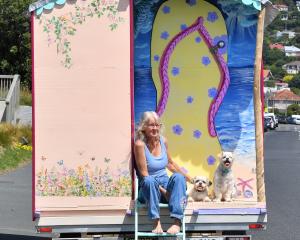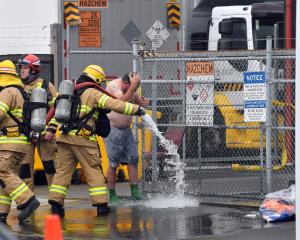
Dr Will Rayment, a University of Otago marine studies lecturer, was on a university field trip with other staff and students, about 10km off the Karitane coast, when the whale was spotted on Thursday.
It was entangled in a line believed to be from a fishing boat, which was wrapped around its body and tail, and was dragging a buoy through the water as it headed slowly north.
Dr Rayment, who took photographs and filmed the whale, said the humpback was spending more time at or near the surface, suggesting its diving ability was inhibited.
"It's pretty distressing to see a large whale entangled like this, knowing that it is suffering and that the consequences might be very bad."
The encounter has prompted the Department of Conservation to call on boaties to report any further sightings of the entangled whale as it headed north over the next few days.
But Doc ranger Mike Morrissey, who leads the South Island large whale disentanglement team, urged boaties not to get too close, disturb the whale or try to disentangle it themselves, saying that would be "very dangerous".
"It can be dangerous, and removing the buoy makes it more difficult for our trained team to carry out the whale disentanglement procedures.
"People seeing the whale can assist our rescue response by staying with the whale, monitoring it and advising of its exact location for our disentanglement team to get to it."
The whale would probably be in "some distress", but it was not in any immediate danger, and Doc's trained staff would use specialised equipment to disentangle it, Mr Morrissey said.
Sightings could be expected off the South Island's east coast over the coming days, as humpbacks made their annual migration north to tropical waters at this time of year.
Any attempt by Doc staff to free the whale would be carried out only when it was safe to do so, which required sea conditions "not being too rough" and enough daylight.
The procedure could take several hours and it was not safe to disentangle whales in darkness, he said.
Dr Rayment said humpbacks began their northward migration at this time of year, sometimes taking them past the New Zealand coast.
And, as the population of species like humpbacks and southern right whales bounced back, more whales were passing through coastal waters.
That created greater "overlap" with human activities such as fishing and an increased risk of entanglements, he said.
"We need to start thinking about where and when these overlaps will occur so that we can manage the conflicts before they become too serious."
Anyone spotting the entangled whale is encouraged to report the sighting using the Department of Conservation hotline, 0800 362-468 (0800 DOCHOT).











